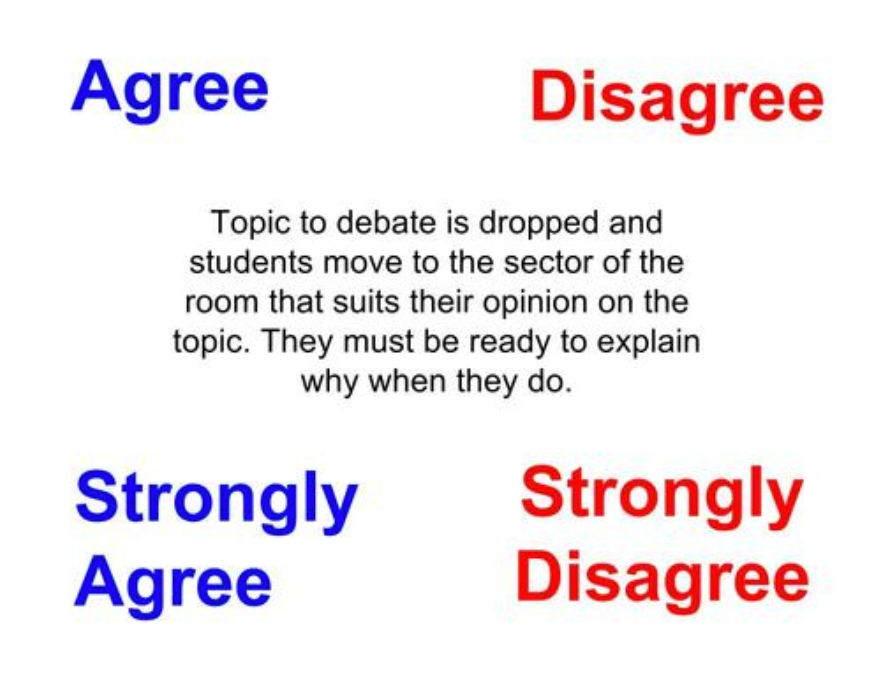Four Corners Activity Generates Excellent Debate
- Starr Sackstein

- Dec 15, 2020
- 3 min read

Do you know any person who doesn't like telling you what they think?
Me either.
That's why the four corners activity is a great way to get kids thinking about themes and problems in a global capacity.
In my AP literature and composition class, I used it as a pre-reading anticipation strategy to get students thinking about universal themes from the text.
But it doesn't have to be used only in an English class as a pre or post-reading strategy. It can easily be used in social studies to debate issues of specific historical significance or in science class when talking about scientific discovery or math when solving problems.
For the purpose of my class, it was to introduce the next satirical text we are working on.
Since Lysistrata is a little racy, it was important to put it into context, and activating their ideas about war, sexuality, power, and government was really important prior to our direct discussion of the text.
It was fascinating to see where students stood on many issues and hear them talk out why they feel the way they do in their own context. Since this information has been activated now, when we move into the discussion of the text, we will draw on the connections they made during the activity to bring that context into our discussion of the ancient comedy.
In addition to debate, which is always a good way to engage students, the four corners activity involves movement. If you have class in the afternoon, right after lunch, getting kids moving around is essential to helping them stay alert and involved.
Here's how it works:
As a pre-reading or preview activity, the teacher would come up with a list of statements that address the particular topics for debate. For example, "Peace is possible." or "Women are equal to men." or "Sexuality can be used to manipulate."
The teacher says the statement and students are expected to move to one of the pre-labeled areas of the room. Agree, strongly agree, disagree, or strongly disagree.
Once the students move to a specific location that determines how they feel about the topic, random students must be prepared to defend their position. Tell students when they choose a corner to be prepared to talk about why.
Neutrality can be honored or not depending on your topic, and the teacher can use the center of the room for that. However, if a student chooses to be neutral, make sure to challenge the position.
If there is a small group at any location, that is a good place to start the debate.
If there is consensus about a statement where all students in the class feel the same way, then there is no reason to really talk beyond getting one or two students to share their ideas.
Make sure to time how long you want each statement to last because it can get a little unwieldy. If students are passionate about the topics (as they can be), this activity can easily take a full period. Personally, I was using it as a warm-up for the first 20 minutes.
Any time we can include opportunities for students to share what they think about topics, we are guaranteed success. When students feel empowered to share their ideas, they thrive.
If you've used this activity before, what has your experience been? If not, how can you use it to engage students? Please share.
*This post originally ran on my Education Week Teacher blog in November 2015







Comments